The soaptree yucca (Yucca elata) is another evocative icon of the southwestern United States. Just like the iconic saguaro cactus, the soaptree yucca conjures up images of determination and survival in the most difficult, unforgiving conditions. But does the soaptree yucca belong in your landscape? Let’s discuss the soaptree yucca pros and cons.
But first, what is the soaptree yucca?
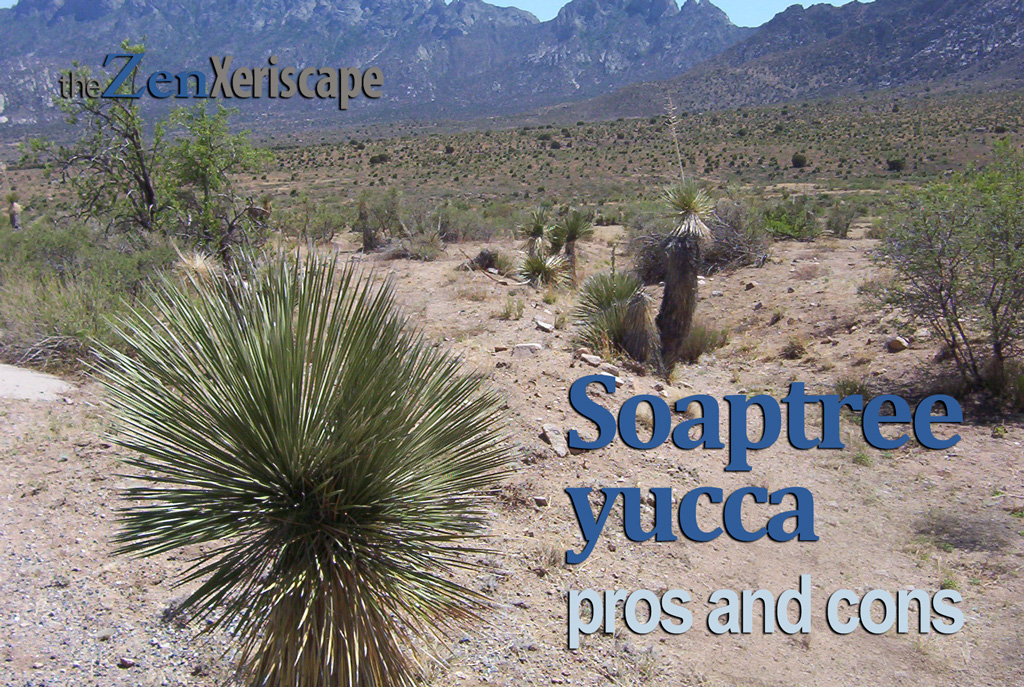
and just outside of the White Sands Missile Range.
Photo by Doug Martin
What is the soaptree yucca?
The dramatically commanding soaptree yucca (Yucca elata) is well-known for the soapy substance called saponin that is found in its roots and trunk.
Where does the soaptree yucca grow?
This large yucca grows naturally in the Chihuahuan and Sonoran deserts in the southwestern United States and northern Mexico. If you drive through the western part of Texas, and then head north into southern New Mexico, you’ll see many soaptree yuccas dispersed throughout the desert.
Soaptree yucca description
The soaptree yucca can grow up to 20 feet tall including its flower stalk, and 5 or more feet wide. In addition, it has long green leaves with white or gray edges. The flexible leaves are narrow with sharp points
My soaptree yucca grows a flower stalk and blooms every other year, but as it develops multiple branches, that might vary. The flowers are beautiful with a milky white hue, and grow by the hundreds on a long flower stalk.
Now, for the soaptree yucca pros and cons.
Soaptree yucca pros and cons
PROS:
Tolerant of hot and cold extremes
This tree-like-yucca will thrive in USDA hardiness zones 6-11. In the Phoenix, Arizona region, my soaptree yucca has survived summer temperatures that reached 122 degrees and winter temps that dipped into the 20’s. But this yucca has survived much lower temperatures in the winter.
The specimens that grow adjacent to the Organ Mountains in the White Sands Missile Range (see photo at the top) have survived temperatures in the single digits, and even briefly below zero degrees fahrenheit.
Drought tolerant
The soaptree yucca is drought tolerant, and can survive in poor soil conditions. But, if you decide to plant this yucca in your landscape, remember that it does require soil that drains well. Here in Arizona, I amended my caliche soil with sand.
Can grow fast with supplemental water
Normally, the soaptree yucca is very slow-growing. However, the three yuccas that I have in my landscape have grown quickly. When I planted my biggest specimen about six years ago, it was only two feet tall.
Today, that yucca is over six feet tall, with multiple branches! To get it to grow faster, all I did was give it supplemental water, and it really has thrived in my xeriscape.
But as always, use caution when applying extra water. I have my soaptree yucca planted in soil that drains well, and it is planted on a slightly elevated mound. It is impossible for water to pool around the based of its trunk.
Has a long stalk with lovely white flowers
I get so excited when I see a new flower stalk emerge on my soaptree yucca. It grows quickly to about three-or-more feet long, and has a mass of stunning white flowers. It is a show-stopping display!
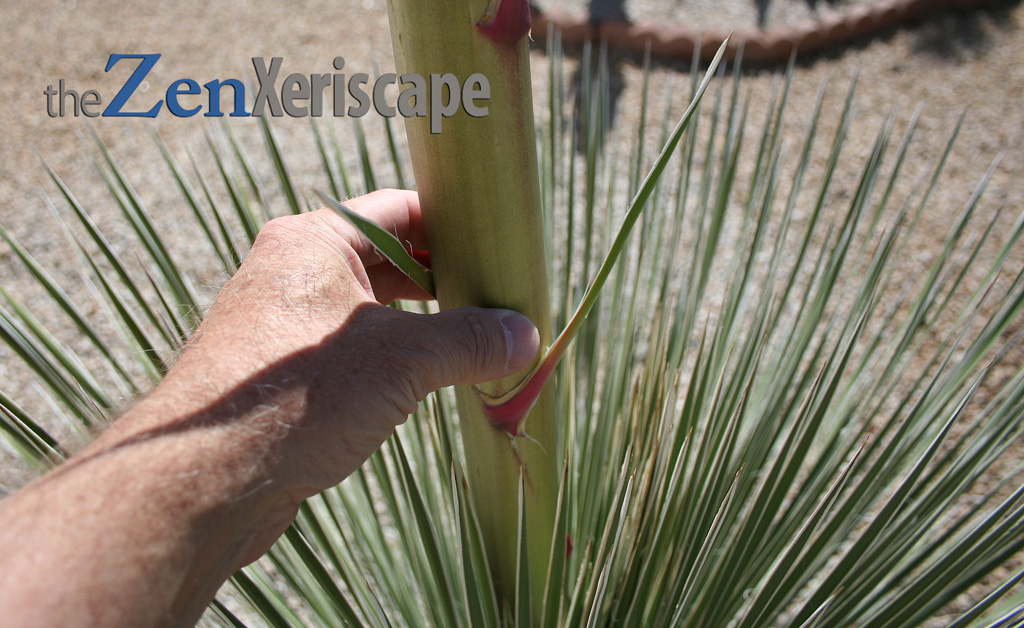
from the soaptree yucca.
It will grow 3-to-5 feet in length and hold beautiful flowers.
Photo by Doug Martin
Can produce pups
In addition to relying on seeds for propagation, this yucca can also produce pups. In fact, the specimen that I bought had two additional pups tucked underneath the parent, and I planted those at separate locations.
However, none of my soaptree yuccas have made their own pups, and that’s after about six years in my landscape. But, I’m not giving up hope—one of these years, I should get some pups that I can replant.
Soaptree yucca pros and cons
CONS:
Leaves have sharp tips and should be pruned
In my landscape, I like to remove the old, dried-up leaves from my yucca. That process can be labor-intensive, and dangerous. The leaves have sharp points that could easily puncture a blood vessel or penetrate an eye. Ouch! I don’t even want to think about that!
However, you might prefer to leave the old leaves on for a natural look. That works, too—it’s whatever you want to do in your own landscape.
When I prune the leaves of my soaptree, I wear a long-sleeve flannel shirt (even when its hot), protective glasses, and always use extreme caution.
To make the process easier, I prune the leaves while they are still green. The green leaves cut much easier, and it’s a faster process. I grab the ends of a handful of leaves with one hand(to keep the sharp points away from me), and with the other hand, I cut that bunch close to the trunk with my pruning saw.
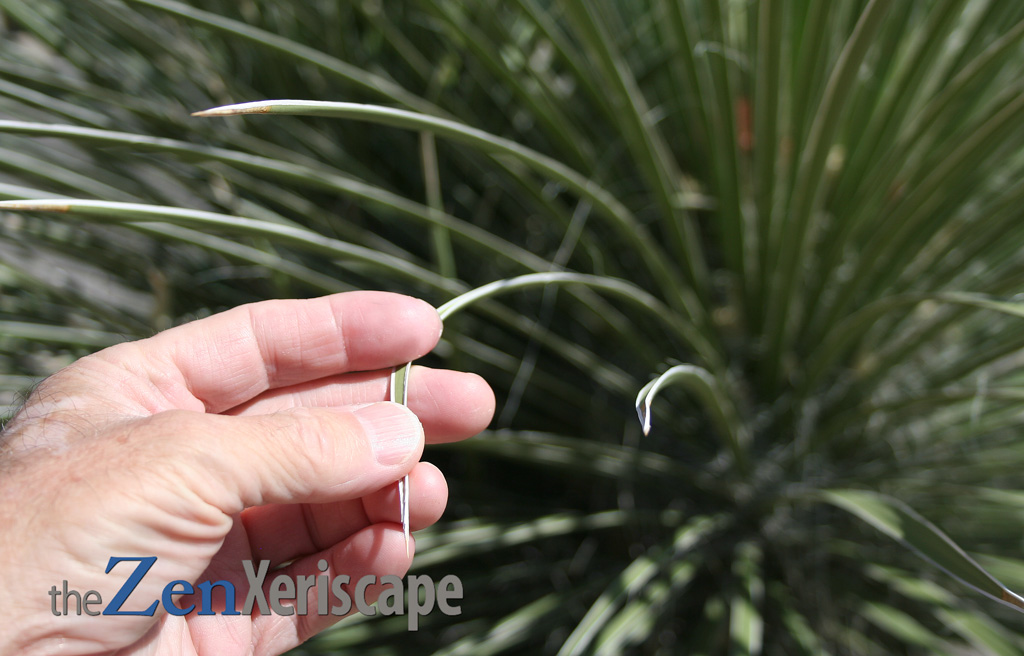
have very sharp tips. Use caution when pruning!
Photo by Doug Martin
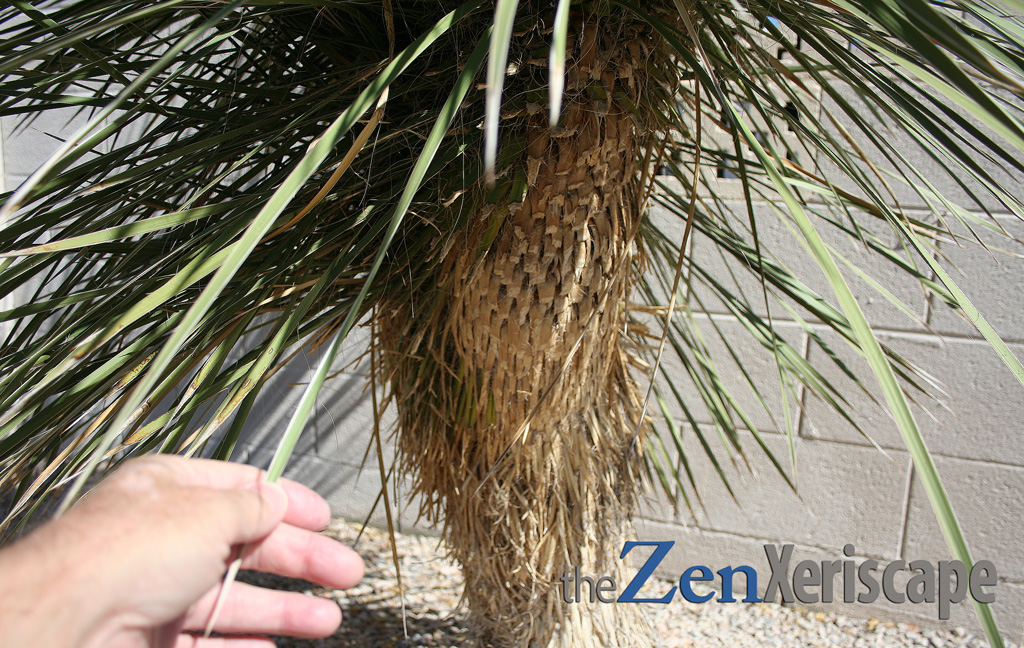
I prune away the old leaves when they
begin to brown because they could shelter rodents.
Photo by Doug Martin
Soaptree yucca should be planted away from common areas
Because of the sharp leaves, this yucca should be planted away from sidewalks or other places where people might congregate.
However, that’s really not a problem, because this tree-like-yucca looks fantastic as a background plant, especially when coupled with smaller agaves or with flowering plants. Used like that, it could be a great focal point in your landscape.
Other than the two ‘cons’, this yucca will add mostly positives attributes to your landscape!
Get Prime! (As an Amazon Associate, I earn a commission from qualifying purchases.)
TAKEAWAYS
Soaptree yucca pros and cons
This large yucca is so stunning and eye-catching that it could be a focal point in any southwestern-style landscape. In addition, it would even work in a more lush landscape in locations that receive a little more rain. Just be sure that the soil drains well.
The flowers are stupendous, and as your soaptree yucca matures, it will grow tall and develop arms. Really, this is one of my favorite drought-tolerant plants in my xeriscape today.
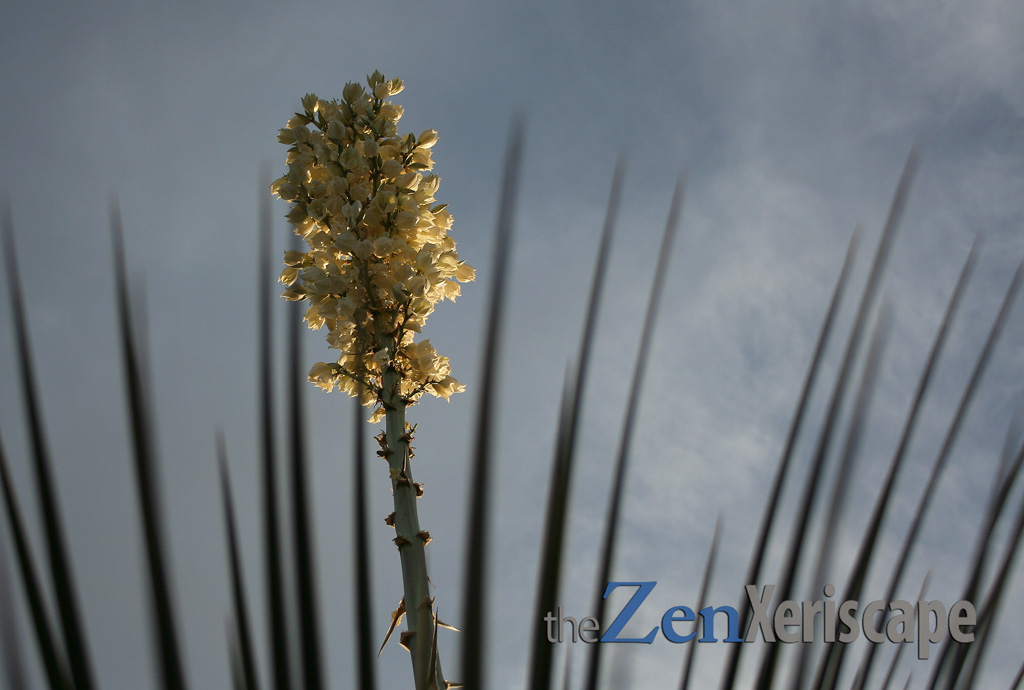
in the dramatic, early-morning Arizona sun.
These yuccas can look exquisite in your landscape.
Photo by Doug Martin
Photos and content by Doug Martin and The Zen Xeriscape

